 You’ve just been treated to a new flavor of ugly.
You’ve just been treated to a new flavor of ugly.
(Notice: This review refers to the author of Assigned Male and its main character with biological pronouns. When dealing with horse-puckey of this magnitude, it helps to keep at least one foot in reality.)
The author of Assigned Male is a self-styled first order left-wing mind who believes that he knows what’s better for us than we do, and he’s on a mission to save us from ourselves. The way he’s going about that is by writing a ridiculous webcomic that furthers his agenda. His whole mission backfired when the people who like his webcomic mainly like it ironically, while the rest of us ridicule it soundly.
Because it’s a given that Assigned Male is such a horrible webcomic, it’s predictable that it’s going to be getting a low score. You probably already know it’s bad, so this is another webcomic review that’s kind-of superfluous and it’s hard to say something about it that hasn’t already been said. Yet, the webcomic is so famous for being bad that it’s kind-of hard to ignore. So it’s like another Sonichu.
Transgenderism is one of the current perversities being propped up by the left-wing establishment, and people pretend to be tolerant of it for fear of backlash from said establishment, even though pretty much everybody is secretly afraid that their children may become one. It’s an issue where people pretend to be “progressive”, yet on a primal level, pretty much every sound-minded individual recognizes something is seriously flipping wrong. When someone pretends to be a homosexual of the opposite gender, it doesn’t tend to result in grandchildren for their parents.
There’s something that I’ve noticed when it comes to webcomics, especially when it comes to the bad ones: there seems to be a disproportionately high representation of transgender themes in webcomics as of late. It might sound like conspiracy theorism, but I personally suspect that there’s an agenda at play, especially considering that the transgender crowd just happens to politically align with a certain movement that believes that there’s getting to be just a few too many human beings running around.
Having said that, the type of transgenderism depicted is the no-op male-to-female variety. That seems to be the more prominent kind, because most doctors inform those considering gender-reassignment surgery that, among other forms of damage, those undergoing the operation permanently lose their reproductive capacity, and they don’t actually gain the capacities of their new gender. Most transgenders are discouraged by this, and settle for wearing a dress and accusing those who use the wrong gender pronouns on them of hate crimes.
If someone does undergo gender reassignment surgery, the usual result is crippling depression, as a body is no longer producing adequate hormones for their biological gender, so a person would end up chemically messed up even without taking a bunch of pills. The suicide rate for post-op transgenders is disproportionately high. Gender reassignment surgery is castration, and it messes a person up in the same ways.
Also, unicorns aren’t real.
It may seem like a sufficient introduction to red pill the trans agenda to death, but there’s something more to what’s going on with Assigned Male. If Sophie Labelle, the author of Assigned Male, were yet another transgender snowflake using the webcomic format to have her characters vicariously win the victories that he does not win in real life, he’d only stand out for how zealous and militant that Assigned Male makes him look. But there’s something more to it.
Sophie Labelle is a known and professed child recruiter.
So, you know about that webcomic that he has which indirectly promotes castration? Its target audience is the most vulnerable members of society. Sophie Labelle is just the kind of guy you should want to keep your children away from, and he’s determined to use his webcomic to get at them.
You know what? A review provides more dignity than this trash pile of a webcomic deserves. Why don’t I straight-up bash it?
Sophie Labelle does not know how to draw, but that doesn’t prevent him from trying. After all, he’s got an agenda to push, and he’s not going to allow something like an inability to properly express himself artistically stand between him and the children he’s trying to prey on.
I went and pulled a random example of Sophie’s art, so I’m not being unfair in presenting this as an accurate representation of how badly this webcomic hurts to look at:
 The characters in Assigned Male discussing media we’d rather be consuming.
The characters in Assigned Male discussing media we’d rather be consuming.
When you’re trying to present transgenderism as beautiful, then you want to depict them beautifully. Otherwise, your endeavor is going to be self-defeating. Because as they are, the cast of Assigned Male, the main character in particular, looks like they were stuffed into a potato sack and beat against a jungle gym.
I know that when someone uses webcomics as the vehicle for their agenda, they may say that the quality of their art really isn’t the point, as an excuse to produce art that is sub-par. If that’s the case, why even use a visual medium at all? If your art is something that a reader can make fun of, that would end up being a liability for the overall message.
The art in Assigned Male does improve somewhat, as Sophie eventually decides to shade his characters. They’re still ugly, but in a different kind of way. After the style change, the children in the comic look like middle-aged dwarves.
The self-insert main character of Assigned Male is Stephie, a boy-to-girl no-op transgender child who is pretty much everything you’d be afraid of in a transgender you’d meet: overly-sensitive and hard-rails into throwing temper tantrums at every perceived slight, no matter how unintentional it may have been. While this already makes him rough-him-up-and-dump-this-mess-across-town material, in execution, the comic itself makes him much more unbearable.
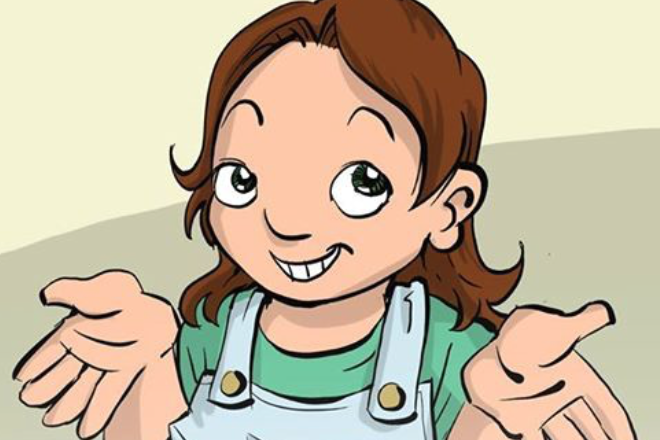 Main character Stephie, ruining Sans for those who like Undertale.
Main character Stephie, ruining Sans for those who like Undertale.
For example, the comic opens with a short story about Stephie going to the doctor’s office with his parents, but Stephie storms out after he discovers that their records still indicate that he’s a boy. Because the physiological differences between males and females may necessitate differences in medical treatment of patients, one would think that Stephie would be understanding that doctors would want a pass when it comes to his game of gender pretend. But no, Stephie’s delusion is more important to him than his being treated for the illness that he went to the physician for in the first place. Much later in the webcomic, the issue of gender for medical identification comes up again, showing that Sophie still hadn’t learned his lesson.
Most of the conflict in Assigned Male involves Stephie taking on some kind of strawman representing whatever argument that Sophie feels like taking on. If that sounds familiar, it’s like another comic I’ve already reviewed, Vegan Artbook. But the comparisons don’t end there. Like Vegan Artbook, some updates are one-panel atrocities that throw some blurbs out there that sounded clever in the author’s mind. Here’s an example that pretty much sums up what’s wrong with Sophie’s outlook:

Until you’ve read a medical encyclopedia, right? No, it turns out that Stephie is more comfortable with kidding himself. What Sophie should understand is that the truth of any matter is never determined by mere belief. That’s the important understanding that separates those in touch with reality from those who are deluded. Again, because this is important: The truth of any matter is never determined by mere belief. Either something is true, or it is not. The only fact that pretending changes is the fact that you’re pretending. Societal distinctions of gender are based on the reality of biological sex, and any perception about it doesn’t change that reality, it merely flavors it.
Now, where can we find something scientific to illustrate the gender differences in a simple and straightforward manner?
 The Voyager plaque says “Hi”.
The Voyager plaque says “Hi”.
Another thing to know about Sophie is that he has no problem with attempting to use his webcomic to talk way over your head. Stephie and the rest of the children in the cast talk like English majors in their senior year. And Stephie is supposed to be 11 years old.
 You kids following along at home?
You kids following along at home?
I have my doubts that that’s the way children in Canada talk. And this is supposed to be a webcomic that’s targeting children?
If you’re an adult and don’t like his webcomic, then you’re not the target audience. But if you’re an impressionable child, then Sophie has no qualm with intellectually substantiating his nominal designation. Sophie punches below his weight class, and punches hard.
You probably don’t need to be told that skepticism is a great thing to bring with you if you were to plan on reading Assigned Male for yourself, but the author does use the comic to make numerous claims as though supported by studies. It’s an intellectually dishonest move that preys on the unsuspecting and shifts the onus of verification onto the readers that might not bother to look into the claim being made. It’s hard to expect more from a person who doesn’t just feel entitled to his own opinions, but also feels entitled to his own facts.
Another thing to know about Sophie is that he does get trolled pretty hard. Surprising, right? Some of his comics are specifically-designed to answer critics, such as this one:

Not really all that funny, especially when you realize that Assigned Male was written to prey on children. If someone points out how badly your webcomic sucks and they are outside your target audience, your webcomic still sucks.
Here’s another example comic:

Talking heads is pretty much what it comes down to. It seems like the assumption is that the suspension of disbelief favors conversations that are highly unrealistic for children to actually have. The dialog is so ham-fisted that it doesn’t seem to go with the faces, which are actually conveying emotion. It’s hard to imagine a pair of robots having a conversation so dull.
By now, you’ve seen a total of 4 different comic formats used by Assigned Male presented in their entirety. In webcomics, there’s less pressure to maintain a consistent format, which frees up webcomic artists to express what they want to with fewer restrictions of the kind that you’d see in a newspaper’s funny pages. However, sometimes it’s obvious that an artist like Sophie is settling for something simple (like the one-panel splash pages) because that’s what he feels like he’s up for making. That’s his choice, but it does take some effort to pull off in a way that doesn’t seem lazy.
But hey, Assigned Male was never about the reader’s satisfaction. It’s about the agenda, and how the author feels about himself for pushing it. If there’s something that bad webcomics like Addanac City and Robot Hugs can do to improve, it’s give a care about the reader’s experience. It’s what a webcomic author can do to keep their comic from being mere participation in the medium like Boss Rush Society, or a self-serving suckfest like Vegan Artbook. Because as it is, Assigned Male is like a crusty lover whose mission is to blow his load then say he’s done.
Now onto the score. I’ve already shown my hand when it comes to my opinion of Sophie Labelle’s agenda, but the fact that he’s targeting the minds of children pisses me off enough to take away any points that his comic might have otherwise gotten.
Assigned Male gets assigned a score of 0 out of 10.

Sophie has actually succeeded in having another review taken down because he didn’t like it. I kind of wonder whether he’ll find this review, read it, and blow his stack.



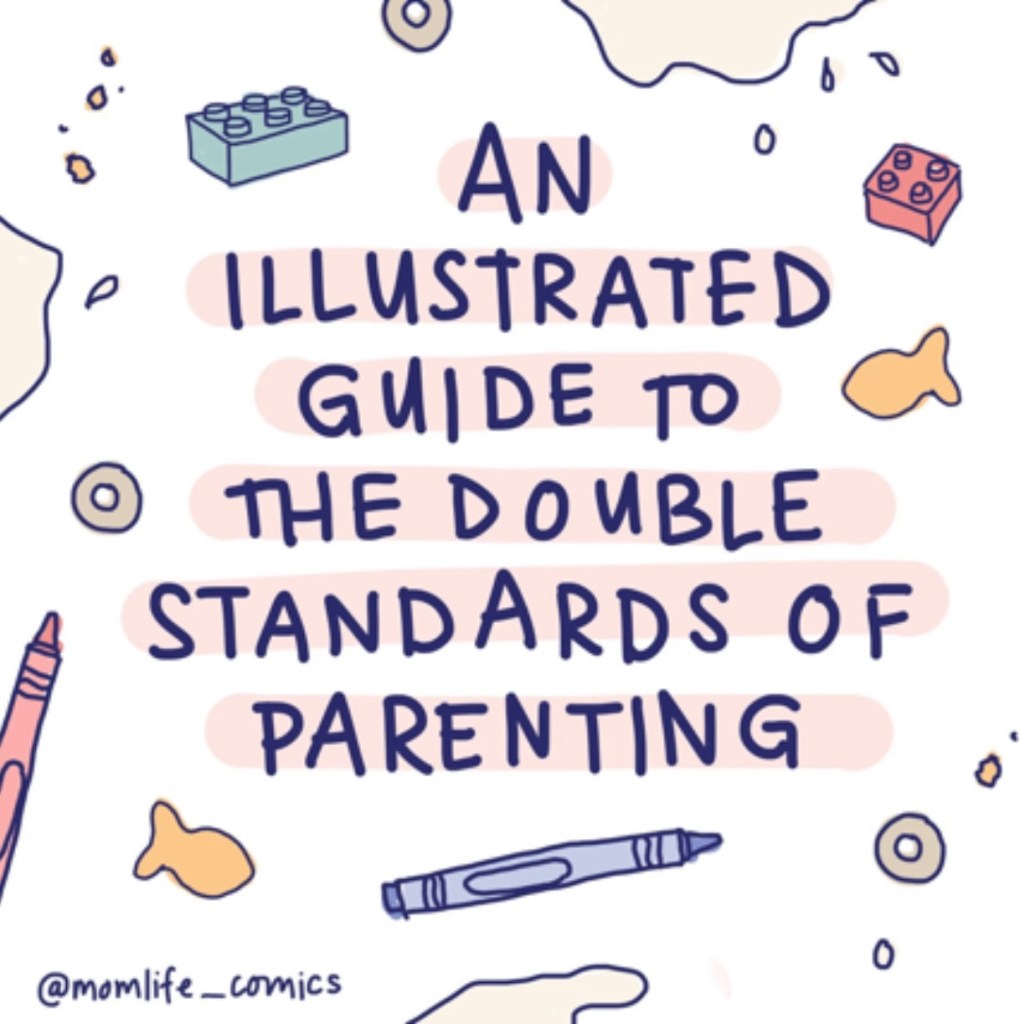











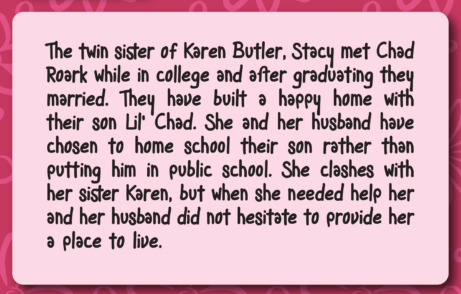

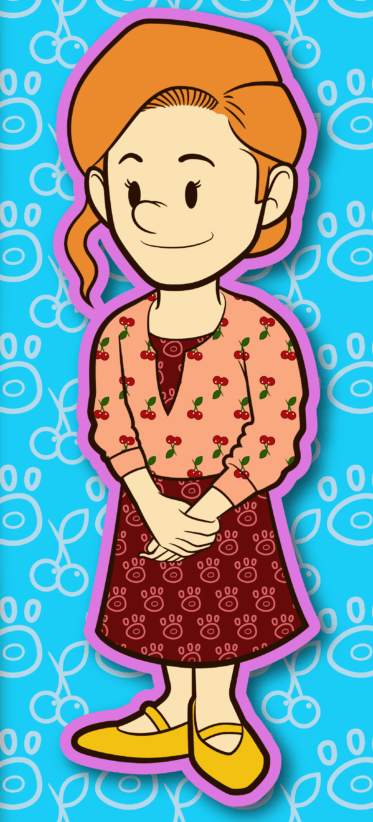


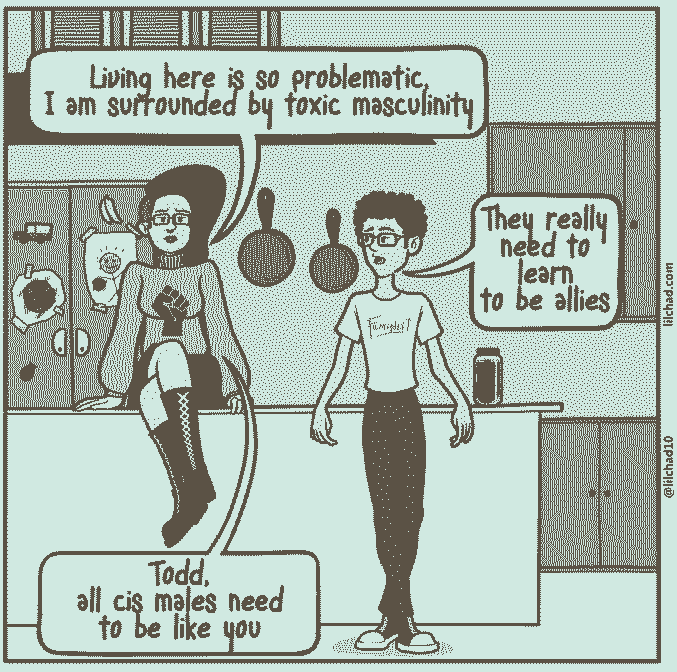
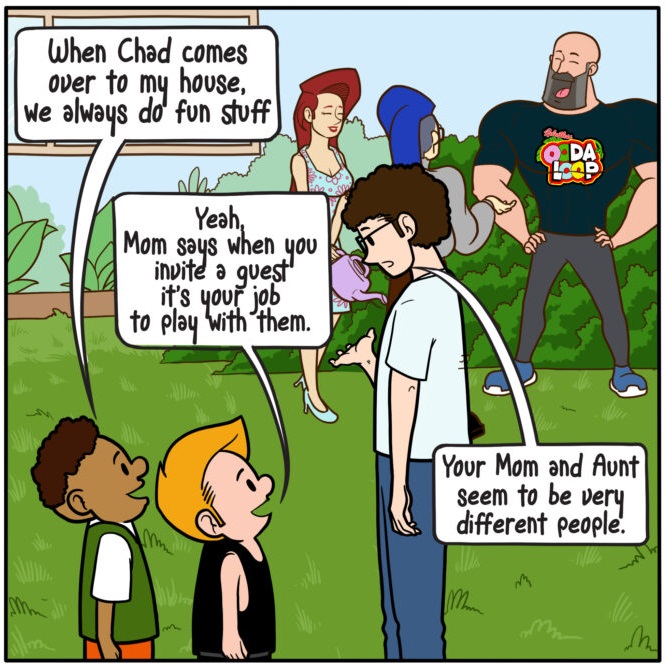
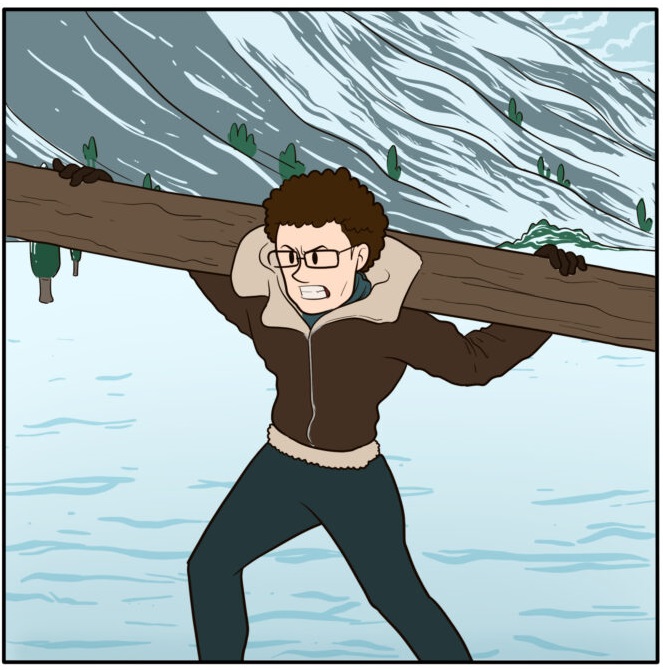


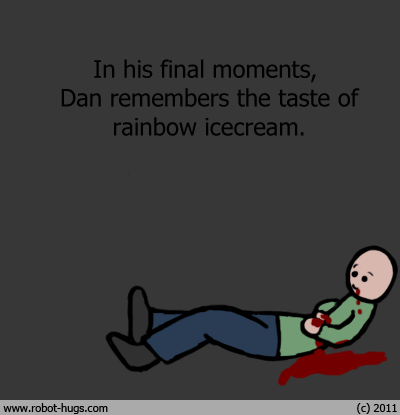




 You’ve just been treated to a new flavor of ugly.
You’ve just been treated to a new flavor of ugly. The characters in Assigned Male discussing media we’d rather be consuming.
The characters in Assigned Male discussing media we’d rather be consuming. Main character Stephie, ruining Sans for those who like Undertale.
Main character Stephie, ruining Sans for those who like Undertale.
 The Voyager plaque says “Hi”.
The Voyager plaque says “Hi”. You kids following along at home?
You kids following along at home?


 Main character on left, title character on right.
Main character on left, title character on right. Can you find anything right with this picture?
Can you find anything right with this picture?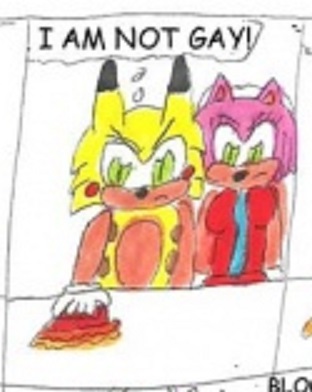
 Notice how even they look bored to tears.
Notice how even they look bored to tears.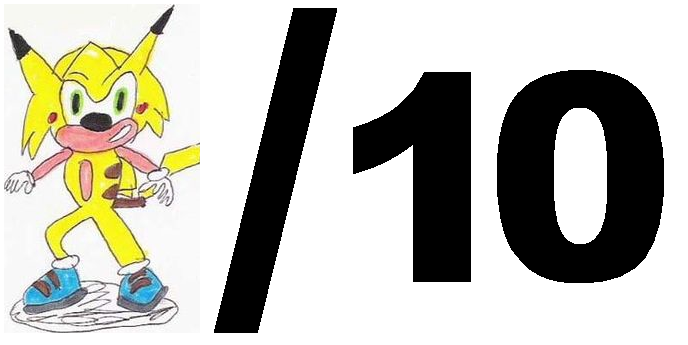





 The moment you realize that only the first two letters of that rebuttal are necessary.
The moment you realize that only the first two letters of that rebuttal are necessary. Old, left. New, right. Can you spot the difference?
Old, left. New, right. Can you spot the difference?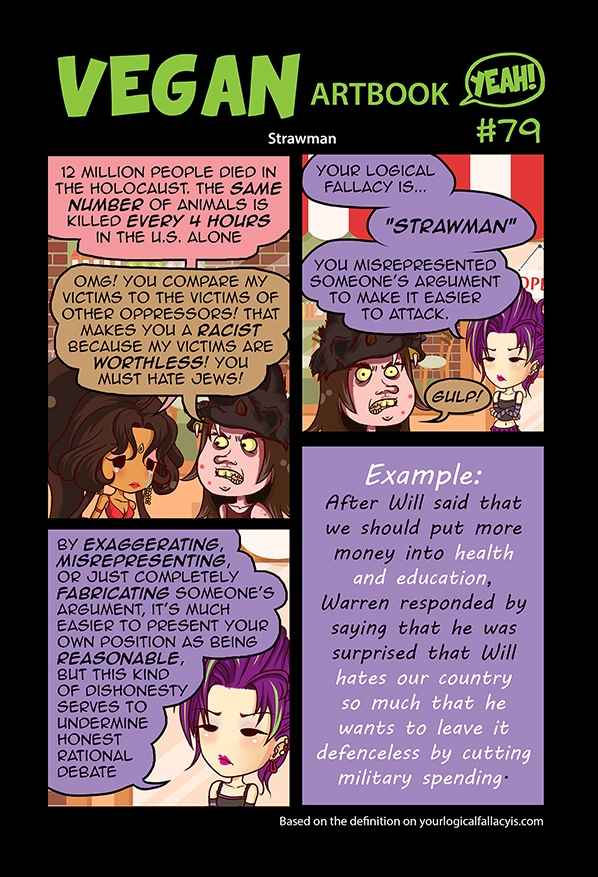 Gather around! Vegan Artbook is going to teach us what a
Gather around! Vegan Artbook is going to teach us what a 
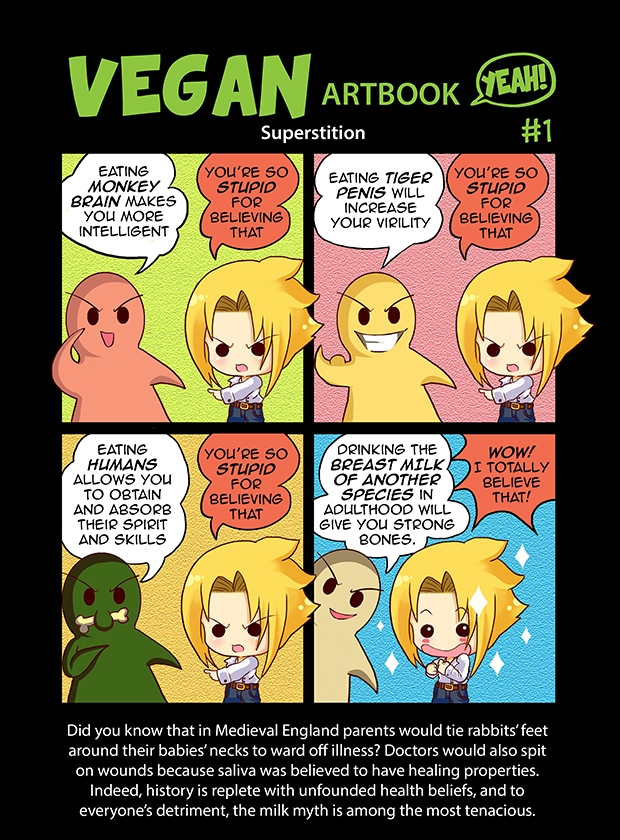


 Is it too much to ask that he struggles or does something more than look slightly peeved that he’s being disfigured with a knife?
Is it too much to ask that he struggles or does something more than look slightly peeved that he’s being disfigured with a knife? Is it a rabbit? Is it a dog? No! It’s just ugly.
Is it a rabbit? Is it a dog? No! It’s just ugly.